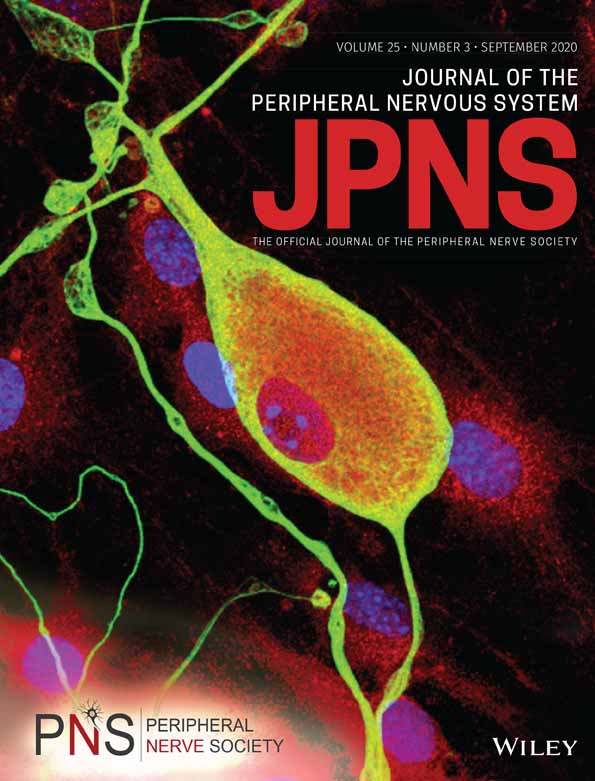Neurolymphomatosis, a rare manifestation of peripheral nerve involvement in lymphomas: Suggestive features and diagnostic challenges
Abstract
Neurolymphomatosis, the infiltration of the peripheral nervous system from lymphoid cells, represents an uncommon manifestation of lymphomas. We describe the challenging diagnostic work-up in a patient with neurolymphomatosis. A 58-year-old woman with previous breast diffuse large B-cell lymphoma treated with chemo- and radiation-therapy, presented with dysesthesias, neuropathic pain at left abdomen and thigh, and weakness at left lower limb 9 years after disease remission. Neurophysiology revealed left T10-L4 radiculo-plexopathy with no abnormalities at cerebrospinal fluid (CSF), nerve ultrasound, and 18fluorodeoxyglucose positron emission tomography/computed tomography (FDG PET/CT). MR-neurography disclosed left rectus abdominis muscle atrophy, neurogenic edema, and denervation. Radiation-induced damage, paraneoplastic, infectious radiculo-plexopathies, and atypical chronic inflammatory demyelinating polyradiculoneuropathy were ruled out. Neurolymphomatosis was suspected, and the patient treated with rituximab with improvement. Despite treatment, the radiculo-plexopathy eventually extended to the right side and sacral roots. Later in the disease course, sural nerve biopsy confirmed the diagnosis. Maintenance therapy was continued, until cutaneous localizations occurred, requiring salvage therapy and autologous stem cell transplant. Although rare, neurolymphomatosis should be considered in all patients with lymphomas and unexplained peripheral nervous system involvement. Hematological, CSF, and neuroimaging findings may be unremarkable, and a high index of suspicion required in order to achieve the diagnosis.




